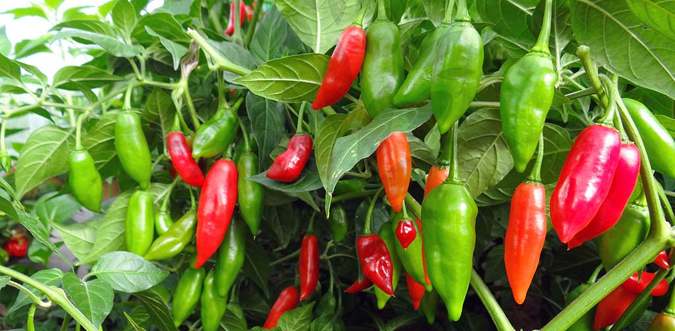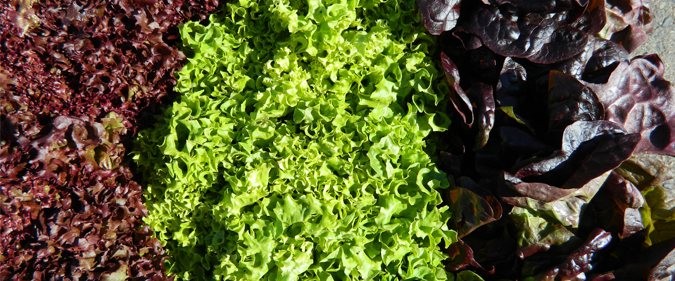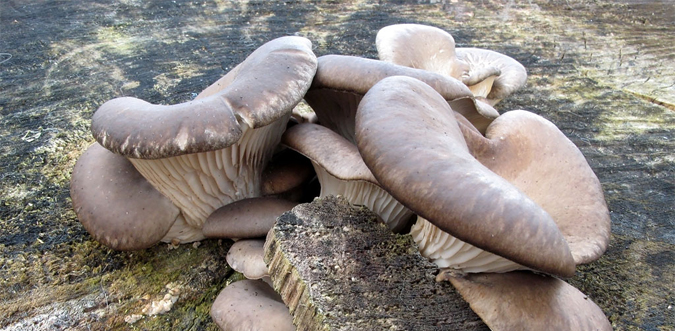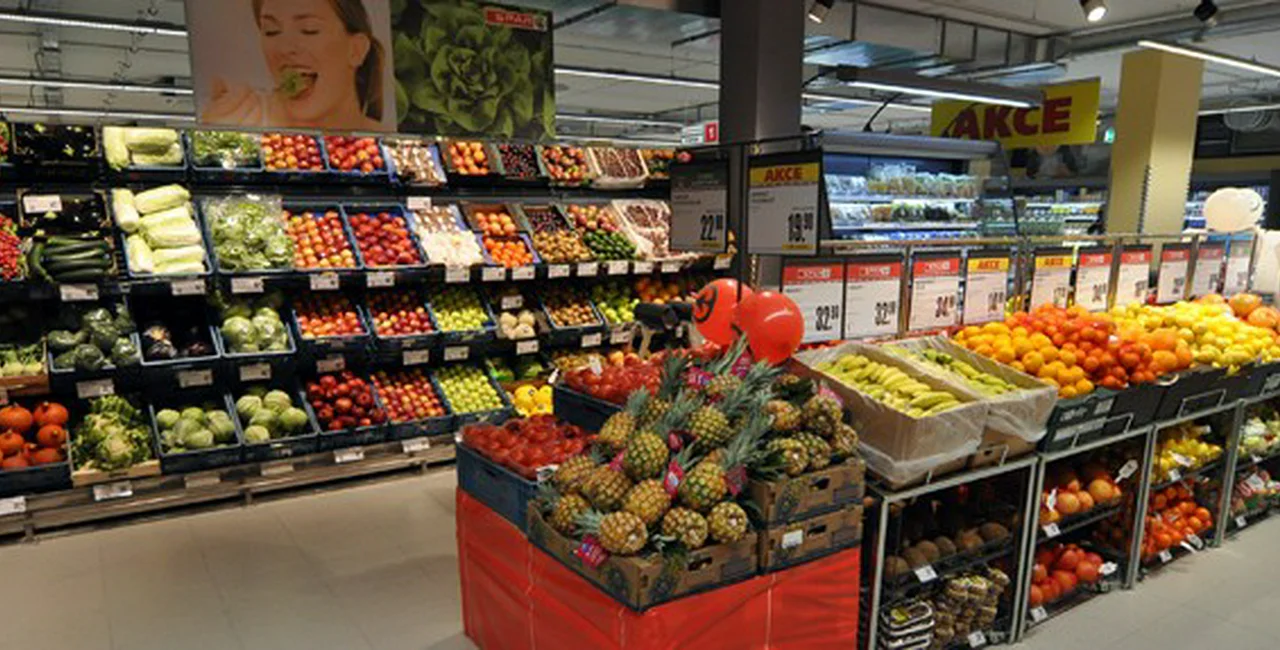Whether you want to make yourself a salad or a hearty soup, the list below should help you identify the exact green (or red).
Just a quick note before you begin: though some of the items mentioned are classified botanically as fruit, we’ve kept with the culinary definitions, so in this list you will find such things as…
Tomatoes
There are a lot of tomato varieties. We’re not going to go through all of them. The typical globe tomato is simply known as rajče (the plural is rajčata). Tomatoes sold on the vine are keříková rajčata.
Some of other varieties are:
cherry rajčata – cherry tomatoes
černá rajčata – black tomatoes
býčí srdce – bull’s heart
Tomatoes lovers might want to consider a trip to Zahradnictví La Nature out in Moravia. They have over 80 types of tomatoes which you can pick yourself.
Peppers
Peppers come in a variety of shapes and colors. The cheapest and most common, bílé papriky (white peppers), are really light green and longish, tapering to a point. Zelené papriky and červené papriky are your green and red bell peppers, respectively. They tend to be a bit more expensive.
Feferonky are the long, thin peppers and are often sold pickled in jars. These are also known as kozí rohy (goat’s horns) sometimes also called beraní rohy (ram’s horns). The really spicy versions might be called pálivé papriky, though often chili is used today too.

Cucumbers
Three varieties of cucumbers are quite commonly available. Slicing cucumbers (the thicker, slightly ‘pimply’ kind) are polní okurky (singular: okurka). Lebanese cucumbers, as in the thinner corrugated variety, are sold as salátové okurky. If you want pickling cucumbers, you will need nakládačky or you can buy the ready-pickled variety.
A commonly made Czech side dish is okurkový salát. It is grated cucumber in white vinegar.
Lettuce and Other Leafy Greens
Lettuce is called salát, which is also the term for salad. Locika is another word for the plant, but it isn’t often used in grocery stores. The most widely available and cheapest lettuce is butterhead lettuce, known locally as hlávkový salát. Iceberg lettuce (ledový salát) can be found in larger stores. It’s usually more expensive than the butterhead and often sold wrapped in plastic. Lollo rosso and lollo biondo are also available under this name.
Some other varieties of lettuce and similar vegetables include:
čekanka – Belgian endive
polníček – corn salad/mâche
římský salát – cos/romaine
roketa, italský salát or rokula– arugula/roquette
Spinach (špenát) is mostly sold frozen in chopped (sekaný) or pureed (špenátový protlak) form. The latter is a popular accompaniment to the Czech dish moravský vrabec, which are pieces of roasted pork with dumplings. The fresh variety sold as listový špenát (when in fact it is the same cultivar as the frozen variety) is not available so often.

Cabbage
Cabbage is an important part of traditional Czech cuisine and is available both fresh and pickled. The fresh variety is referred to as hlávkové zelí or simply zelí. White cabbage is the more common, though red can also be found. Sauerkraut is kysané zelí and is sold in jars with other pickled vegetables or in packs in the refrigerator section. Both red and white are available. There is also a sweet variety called sladkokyselé zelí, literally sweet and sour cabbage. Sauerkraut is main accompaniment to roast duck and is one of the key parts of the classic dish vepřo-knedlo-zelo.
Some other varieties of cabbage and related types are:
čínské zelí – chinese cabbage
pekingské zelí – napa cabbage
růžičková kapusta – brussel sprout
kapusta – savoy cabbage
Celery
The Czech for celery is celer, but more often than not this word refers to celeriac – the large globe-shaped root of celery. This is often used as the base for soups. If you’re after the stalks, it’s better to try the larger grocery stores. It is known řapíkatý celer.
Root vegetables
We’ve already covered potatoes, which you can read more about potatoes here.
Carrot in Czech is mrkev. This word is often (though not always) used for the older carrots. Younger carrots are sometimes known as karotky (sing.: karotka). Carrots can be sold loose (volné) or in a bunch (svazek).
Parsnip is pastiňák. However, you are more likely to find the quite similar-looking parsley root (petržel) widely on sale. If you much prefer the former root vegetable to the latter, check some of the specialty shops.
Cherry belle radishes (as in the small red spherical variety with the slightly tangy taste) are simply called ředkvičky (sing. ředkvička) in supermarkets, though their specific name is letní setá ředkev. Icicle radishes, which are long and white like their namesakes, are known as rampouchy – literally icicles. They are usually sold by the bunch (svazek). Chinese radish, or daikon, is also known as daikon or just ředkev.
Turnips are known as brukev řepák vodnice, though more commonly as vodnice. Beetroot is červená řepa, and is more often available pickled in brine with other pickled vegetables.
Legumes
Peas are known as hrách for the larger variety often sold dried, or hrášek for the varieties sold frozen or in cans. Minted peas are available; in fact, they are the same species. An interesting language point, the singular hrách or hrášek is used no matter the quantity. Snow peas are císařský hrášek and snap peas are cukrový hrášek.
Lentils are čočka. Similalry, the plural and singular form of the word is the same. A variety of lentils can be found – red lentils (červená čočka), green lentils (zelená čočka) and black lentils (černá čočka). According to a Czech superstition, lentils should be eaten on New Year’s Day in order to be prosperous in the New Year.
There are two words for beans. If you’re talking about the seeds, i.e. what we mean when we talk about kidney beans or baked beans, the word is fazole. These beans are mostly sold dried or in cans with brine or sauce. If you’re after the seed pod, e.g. string beans (also known as green beans or runner beans), the various names are zelené fazole, fazolové lusky, or sometimes just lusky.
Mushrooms
Picking mushrooms is well-established as a popular pastime here, but you don’t have to go the woods to get them.
In the supermarket, button mushrooms or champignons are widely available as žampiony. Oyster mushrooms are quite common and sold as hlíva ustřičná.

Specialty Shops
If you’re looking for more exotic vegetables than what is on offer in the supermarket or your local grocery store, try these places.
Produit de France, located by the river at Masarykovo nábřeží 4, has a range of hard to find vegetables types flown in from around the world. You can find baby spinach, louno tomatoes, and various lettuces. The best day to go is Wednesday, when the produce has arrived.
Shalamar at Lipanská 3 in Prague 3 is the place to go for fresh okra (lady’s fingers), baby eggplant, and yams, not to mention a wide range of lentils.
Thai’s Asian Food Shop at Francouzská 66 in Prague 10 has a range of vegetables used in Asian cuisine such as bok choy and fresh bean sprouts. Otherwise, you can head out to Sapa on the outskirts of Prague at Libušská 126, Praha 4 and explore the stores there.
***
Deciphering Czech food products series:
- Dairy – A helpful guide to milk, butter, yogurt, and more..
- Beef Cuts – How to ask for what you need at Czech butcher’s?
- Czech Potatoes – How it Rose from the Underground to Czech Tables Everywhere
- Beer – Czech Beer’s Got Style
- Bread – A guide to bread and other baked goods
- Cold Cuts – We look at ham, sausage and other goodies
- Cheese – Czech (and Slovak) Cheeses
- Flour and other baking products
- Vegetable – We take a stroll through the Czech veggie section
Related articles
- Farewell Fake Rum? A Short History of the Endangered Czech Spirit
- Cocktail Emporium with Prague-Themed Drinks Opens on Wenceslas Square
- Prague Named among Top 10 Vegan-Friendly Capitals In 2017
- Czech Republic Will Continue to Fight Inferior Food Quality
- Take a Look Inside Prague’s New Temple For Meat Lovers












 Reading time: 6 minutes
Reading time: 6 minutes 



























